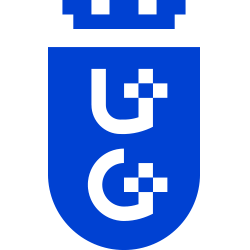
ul. Bażyńskiego 1a 80-952 Gdańsk
Polska
ISNI ID: 0000 0001 2370 4076
GRID ID: grid.8585.0
Małgorzata Łosiewicz
Media Biznes Kultura, Numer 1 (2) 2017, 2017, s. 23-31
https://doi.org/10.4467/25442554.MBK.17.001.7648Małgorzata Łosiewicz
Media Biznes Kultura, Numer 2 (7) 2019, 2019, s. 69-79
https://doi.org/10.4467/25442554.MBK.19.020.11584Celem artykułu jest przedstawienie sposobów prezentacji w mediach sytuacji kryzysowych związanych z naruszaniem norm moralnych. Autorki posłużyły się symboliką dekalogu w nawiązaniu do przykazania – nie mów fałszywego świadectwa. Analizie poddano przypadek znanego językoznawcy, profesora Jana Miodka, oskarżonego o współpracę ze Służbą Bezpieczeństwa. Kryzys komunikacyjny wywołany oskarżeniem miał szeroki medialny wydźwięk, trafiając w emocje związane z gorącą polityczną dyskusją na temat lustracji na uczelniach wyższych. Za kontekst interpretacyjny posłużyło pojęcie postprawdy.
Małgorzata Łosiewicz
International Business and Global Economy, Tom 34, 2015, s. 198-209
https://doi.org/10.4467/23539496IB.13.016.3989Public perception of healthcare personnel in Poland and some other European countries in view of selected studies
The paper presents current trends in the perception of healthcare in Poland and other European countries. The authors present the results of numerous surveys conducted both in Poland and abroad, which demonstrate significant changes in the way healthcare is perceived by the public in individual countries. As the diagnosis of how the medical profession is perceived in Poland gives no grounds for optimism, factors affecting its perception must be identified. This shows healthcare evaluation to be contextually-based, depending on the performance of both individual healthcare establishments and of the whole healthcare system in Poland. Demography has a heavy impact on the evaluation, as the medical services are being rated by the ageing society.
Małgorzata Łosiewicz
Zeszyty Prasoznawcze, Tom 65, Numer 2 (250), 2022, s. 63-79
https://doi.org/10.4467/22996362PZ.22.016.15607W czasie pandemii COVID-19 zarządzanie komunikacją stało się podstawowym elementem sprawnego funkcjonowania uczelni. Celem artykułu jest zaprezentowanie sposobów komunikowania szkół wyższych z otoczeniem z wykorzystaniem mediów społecznościowych. Do badania zostało wybranych 16 największych szkół wyższych z 16 województw. Przeprowadzone zostały badania ankietowe, pogłębione wywiady oraz analiza aktywności w najpopularniejszych mediach społecznościowych (Facebook, Twitter, Instagram). Zebrany materiał badawczy stanowi 917 odpowiedzi respondentów w badaniach ankietowych i pogłębionych wywiadach oraz 7909 postów zamieszonych przez uczelnie w mediach społecznościowych (zebranych za pomocą monitoringu mediów z wykorzystaniem narzędzi informatycznych). Do tej pory w odniesieniu do uczelni, stanowiących znaczące ośrodki w rozwoju regionów, nie zostały przeprowadzone badania o tak szerokim charakterze. Wyniki badań wskazały na skalę komunikacyjnych wyzwań (dot. m.in. funkcjonowania zespołów kryzysowych, intensywności komunikacji czy kanałów komunikacji), z jakimi musiały mierzyć się uczelnie, które wymagały reorganizacji wszystkich dotychczasowych działań.
Małgorzata Łosiewicz
Zarządzanie w Kulturze, Tom 20, Numer 2, 2019, s. 241-256
https://doi.org/10.4467/20843976ZK.19.015.10532
The paper presents current trends in the operation of cultural institutions owned by the local government. They often become similar to enterprises and implement market solutions applied by the latter. The conducted analysis has revealed modern changes in the institutions functioning in the sphere of culture, which – besides cultural and artistic activities to which they are obliged by their statutes – are also involved in undertaking educational, trading or promotional measures. Typically, cultural institutions, while operating within the framework of the state’s cultural policy as entities autonomous in terms of their legal status, organisation and finance, are subject to a dynamic transformation, ever more often extending the offer addressed to their target groups and redefining the way of their participation in culture. The activities are closely related to the definition of image identification, requiring coherence and consistency. This translates into problems with image communication, resulting from the dispersed offer, but also typical of the operation of the signs performing the functions of identification, information and utility meaning.